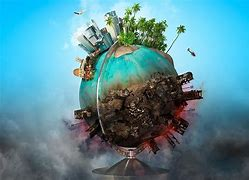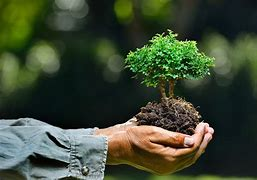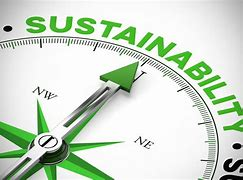Arts and culture
Art
Art can be defined as the expression of human creativity,
imagination, and skill through various mediums such as painting, sculpture,
music, dance, literature, film, and theater. It is a form of communication that
conveys emotions, ideas, and experiences that cannot be expressed through words
alone. Art can also be a way of exploring and reflecting on the world around
us, as well as a means of challenging and questioning societal norms and
values. Ultimately, art is a way of enriching our lives, inspiring us, and
connecting us with others.
Art is a diverse and subjective field, with various
interpretations and definitions depending on cultural and historical contexts.
Some may argue that art is purely aesthetic, while others may view it as a form
of political or social commentary. Some may consider art to be a reflection of
the artist's inner emotions and experiences, while others may see it as a
product of societal and cultural influences.
Throughout history, art has served different purposes in
different cultures and societies. It has been used for religious and spiritual
purposes, as a means of preserving and sharing cultural traditions, as well as
for entertainment and personal expression. With the rise of modern and
contemporary art movements, the boundaries and definitions of art have
continued to evolve and expand, encompassing a wide range of styles and
mediums.
In today's world, art plays an important role in shaping our
collective identity and understanding of the world around us. It can inspire
us, challenge us, and encourage us to think critically and creatively. Whether
it is a painting, a sculpture, a film, or a performance, art has the power to
move us, to touch our hearts and minds, and to leave a lasting impact on our lives.
Art is also closely intertwined with the human experience and
our perception of reality. It has the ability to evoke strong emotions and
feelings, such as joy, sadness, anger, or nostalgia, and can provide a sense of
catharsis or release. Through art, we can explore different perspectives and
experiences, and gain a deeper understanding of the world and ourselves.
Moreover, art can also have a significant impact on society,
influencing our beliefs, attitudes, and behaviors. It can challenge societal
norms and values, promote social justice and equality, and raise awareness
about important issues. Art has the power to bring people together and bridge
cultural and social divides, fostering empathy and understanding between
different communities.
Ultimately, art is a reflection of our humanity, our
creativity, and our desire to express ourselves and connect with others. It is
a testament to the diversity and richness of human experience, and a
celebration of the beauty and complexity of life.
In addition, the creation and appreciation of art is often
considered to have therapeutic and healing benefits. Art therapy, for example,
is a form of psychotherapy that uses art-making as a tool for self-expression
and emotional processing. Engaging in artistic activities can also promote
mindfulness, reduce stress, and improve overall well-being.
The history of art is a rich and diverse one, spanning
thousands of years and encompassing a vast array of styles and movements. From
ancient cave paintings to contemporary installations, art has played a pivotal
role in human culture and society. It has been used to commemorate important
events, to convey religious and spiritual beliefs, and to challenge established
power structures and social norms.
Today, the art world continues to evolve and adapt to
changing societal and cultural contexts. From street art to digital media,
artists are exploring new mediums and pushing the boundaries of traditional art
forms. Art continues to inspire and challenge us, inviting us to see the world
in new and different ways, and to reflect on our place within it.
Art also has a significant economic impact, with the art
market generating billions of dollars in revenue each year. The art industry
encompasses a wide range of professions, including artists, curators, dealers,
auctioneers, and museum professionals. The value of an artwork can vary greatly
depending on factors such as its rarity, historical significance, and market
demand.
Moreover, the production and consumption of art can have
environmental implications, particularly in relation to the use of natural
resources and the generation of waste. Many artists and art institutions are
taking steps to reduce their environmental impact and promote sustainable
practices.
Finally, the definition and interpretation of art is
constantly evolving, with new art forms and styles emerging all the time.
Contemporary art, for example, often challenges traditional definitions of art
and pushes the boundaries of what is considered acceptable or valuable. As
such, the study and appreciation of art is an ongoing process of discovery and
interpretation, reflecting the diverse and complex nature of human experience.
Art can also serve as a means of cultural exchange and
diplomacy, promoting mutual understanding and respect between different
cultures and nations. International art exhibitions and cultural exchange
programs provide opportunities for artists and audiences from different parts
of the world to share their experiences and perspectives, fostering cross-cultural
dialogue and collaboration.
Art also has the ability to preserve and transmit cultural
heritage, providing a window into the past and the traditions of different
societies. Museums and galleries play a key role in this, collecting, preserving,
and exhibiting artworks and artifacts from different cultures and historical
periods.
Furthermore, art can be a powerful tool for education,
stimulating creativity and critical thinking skills, as well as promoting
cultural and historical literacy. Art education programs in schools and
community settings can provide opportunities for individuals of all ages and
backgrounds to engage with art and develop their skills and knowledge.
In summary, art is a complex and multifaceted phenomenon that
encompasses a wide range of styles, mediums, and purposes. It reflects our
humanity, our experiences, and our aspirations, and has the power to move and
inspire us, to challenge our assumptions and beliefs, and to bring us together
in new and meaningful ways.
Art can also be a way to explore and express our personal
identities and experiences, as well as the complexities of the human condition.
Through art, we can express our individuality, explore our inner worlds, and
communicate our emotions and perspectives to others. Art can also be a way to
process and cope with challenging life experiences, such as trauma, loss, and
illness.
Moreover, art can be a catalyst for social change and
activism. Art has played a pivotal role in many social and political movements
throughout history, from the civil rights movement to the LGBTQ+ rights
movement. Artists have used their work to raise awareness about social and
environmental issues, to challenge dominant narratives and power structures,
and to inspire collective action.
Finally, art can bring joy and beauty into our lives,
providing a source of inspiration and enrichment. Whether it is a beautiful
painting, a moving piece of music, or a captivating performance, art has the
ability to uplift our spirits, awaken our senses, and enhance our overall
well-being.
In summary, art is a complex and multifaceted phenomenon that
reflects and shapes our individual and collective experiences, identities, and
aspirations. It has the power to inspire, challenge, heal, and transform us,
and is a testament to the beauty and richness of the human spirit.
Culture
Culture refers to the shared values, beliefs, customs,
practices, traditions, and artifacts that characterize a group or society. It
encompasses the ways in which people make sense of the world around them,
interact with one another, and express themselves through various forms of art,
music, literature, language, and communication.
Culture can be influenced by a variety of factors, such as
geography, history, religion, politics, economics, and technology. It evolves
over time, as new ideas and practices are introduced and old ones are adapted
or abandoned.
Culture is not static, but rather dynamic and multifaceted.
It can be expressed in many different ways, from the food we eat and the
clothes we wear, to the art we create and the language we speak. It can also be
reflected in social norms and behaviors, such as how we greet one another, show
respect, or express emotions.
Moreover, culture can be both a unifying and a divisive
force. It can create a sense of shared identity and community among people, while
also highlighting differences and promoting conflict. Understanding and
appreciating different cultures is essential for building bridges and promoting
mutual respect and understanding among people of diverse backgrounds.
Culture can also play a crucial role in shaping our
worldviews and beliefs about ourselves and others. It can influence our
perceptions of beauty, morality, justice, and truth, and shape our attitudes
towards issues such as gender, race, and social class.
Furthermore, culture can be a source of innovation and
creativity, providing inspiration and ideas for new products, technologies, and
ways of thinking. Cultural exchange and cross-fertilization can spark new forms
of art, music, and literature, as well as new ways of doing business and solving
problems.
Culture also plays an important role in shaping our social
institutions and practices, such as education, healthcare, and government.
Different cultures may have different ideas about what constitutes good
governance, effective healthcare, or appropriate educational practices.
Finally, culture is not limited to national or ethnic
boundaries, but can also be found in subcultures, such as those based on shared
interests, hobbies, or lifestyles. These subcultures can provide a sense of
belonging and identity for their members, as well as opportunities for creative
expression and innovation.
In summary, culture is a complex and multifaceted phenomenon
that shapes and reflects our individual and collective experiences, identities,
and worldviews. It is constantly evolving and adapting to changing social and
historical contexts, and is essential for building bridges and promoting
understanding among people of diverse backgrounds.
Culture also influences the way we communicate and interact
with others. It provides us with a shared language, symbols, and codes that
enable us to communicate effectively with one another, as well as a set of
social norms and rules that guide our behavior in different contexts.
Moreover, culture can have a profound impact on our
well-being and quality of life. Cultural practices and traditions can provide a
sense of continuity and meaning in our lives, as well as opportunities for
social support, connection, and celebration. Culture can also provide a source
of resilience and coping in times of stress and adversity.
Furthermore, culture can have economic implications,
influencing patterns of production, consumption, and trade. Cultural
industries, such as music, film, and fashion, can create jobs and generate
revenue, while also contributing to the diversity and richness of global
culture.
Finally, cultural diversity is a valuable resource that can
enrich our understanding of the world and promote global peace and cooperation.
Encouraging cross-cultural dialogue, understanding, and respect is essential
for addressing global challenges such as poverty, climate change, and social
inequality.
In summary, culture is a fundamental aspect of human
existence, shaping and reflecting our individual and collective experiences,
identities, and interactions. It influences the way we communicate, think, and
act, and is essential for building resilient, inclusive, and thriving
societies.
Culture can also have a significant impact on our personal
and professional development. Our cultural background can influence our
education, career choices, and opportunities, as well as our personal
relationships and social networks.
For example, cultural expectations and values may influence
the subjects we study in school, the professions we choose, and the ways in
which we navigate the job market. Cultural differences may also affect the way
we approach leadership, teamwork, and communication in the workplace.
In addition, culture can influence our personal relationships
and social networks, shaping the way we form friendships, romantic
partnerships, and family structures. Cultural differences may influence our
attitudes towards dating, marriage, and parenting, as well as the role of
extended family and community in our lives.
Moreover, culture can have an impact on our physical and
mental health. Cultural practices and traditions can affect our diet, exercise
habits, and healthcare practices, as well as our attitudes towards illness and
wellness.
Finally, cultural exchange and interaction can have positive
benefits for both individuals and societies. Exposure to different cultures can
broaden our perspectives, challenge our assumptions, and promote empathy and
understanding. It can also foster innovation and creativity, as well as promote
cultural diplomacy and global cooperation.
In summary, culture has a far-reaching impact on our personal
and professional lives, as well as on society as a whole. Understanding and
appreciating cultural differences is essential for building inclusive and
thriving communities, promoting innovation and creativity, and addressing
global challenges.
One important aspect of culture is its ability to preserve
and transmit knowledge and values across generations. Through oral traditions,
storytelling, art, music, and other forms of cultural expression, societies are
able to pass on their histories, beliefs, and values to future generations.
This cultural transmission can provide a sense of continuity
and identity, as well as a source of wisdom and guidance. It also allows
individuals to connect with their cultural heritage, and to understand and
appreciate the experiences of their ancestors.
Moreover, cultural preservation can have significant benefits
for future generations. By preserving cultural practices and traditions,
societies can maintain a rich and diverse tapestry of human experiences and
knowledge. This can provide inspiration and ideas for future generations, as
well as a sense of continuity and connection with the past.
However, cultural preservation can also be challenging in the
face of social, economic, and environmental change. Rapid urbanization,
globalization, and other factors can disrupt traditional ways of life and erode
cultural diversity. Climate change, natural disasters, and conflicts can also
have devastating impacts on cultural heritage sites and artifacts.
Therefore, efforts to preserve and protect cultural heritage
are essential for maintaining the richness and diversity of human culture. This
includes initiatives such as cultural conservation, preservation of traditional
knowledge, and the protection of cultural heritage sites and artifacts. It also
involves promoting cross-cultural dialogue and understanding and supporting the
rights and dignity of indigenous and minority cultures.
In summary, cultural preservation and transmission are
essential for maintaining the richness and diversity of human culture, and for
promoting intergenerational continuity and identity. Efforts to protect and
preserve cultural heritage are vital for promoting understanding, empathy, and
respect among different cultures and for addressing global challenges.

































